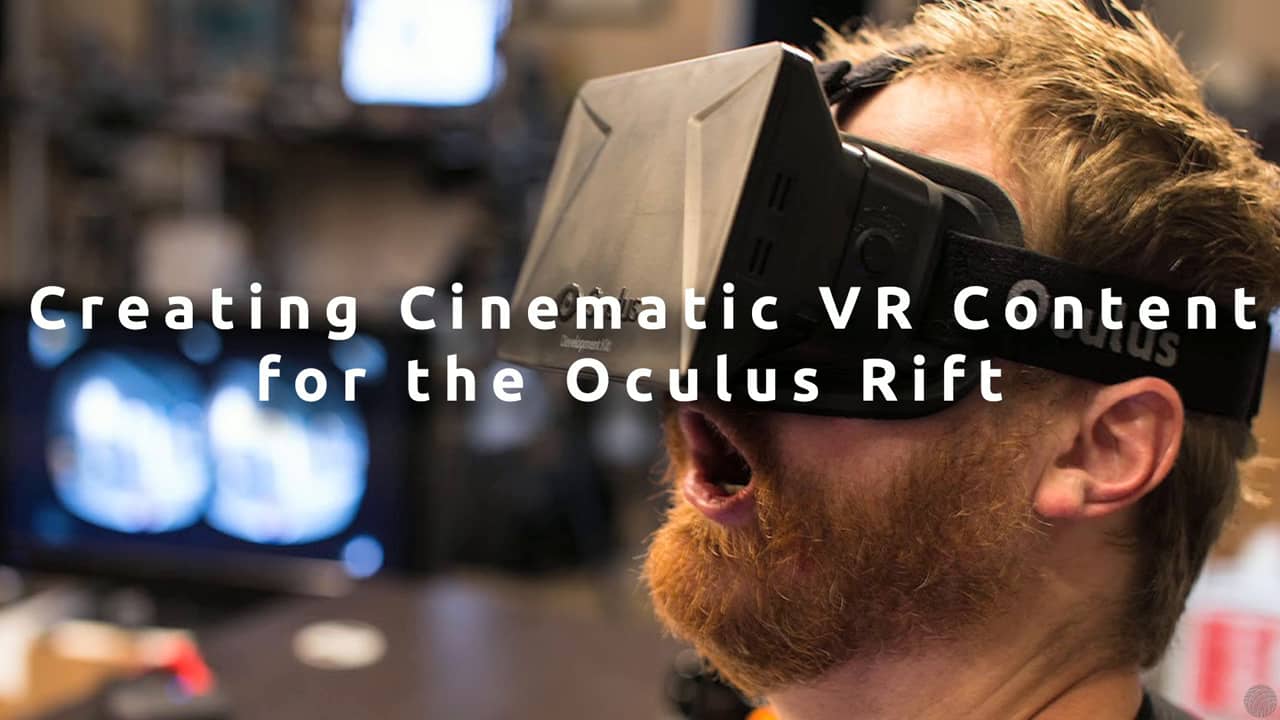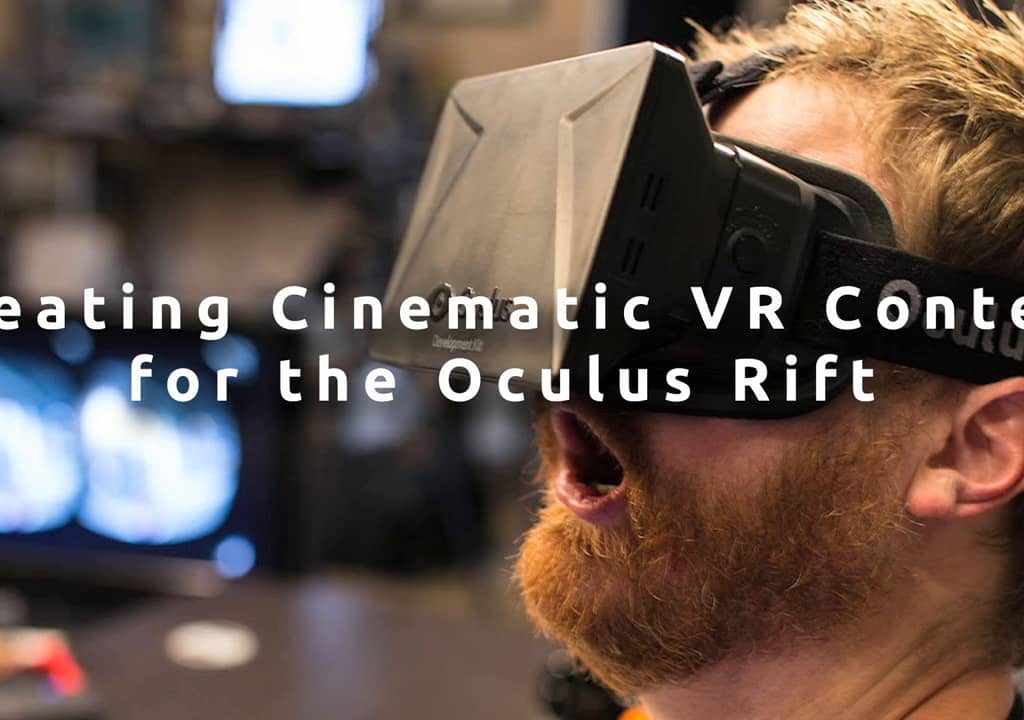
Greg Downing, CTO of Santa Monica based VR studio xRez, is a pioneer in the cinematic virtual reality (VR) space. His company specializes in image-based 3D technologies that have been applied on various projects at xRez for the last seven years. He’s working to change the way professionals and audiences think about VR.
In anticipation of that webinar, we talked with Greg about the differences between VR today and when it first came onto the scene, how professionals can and should approach VR content and what attendees can expect to see and hear during his live webinar.
ProVideo Coalition: What sort of reactions are you seeing from people that are made aware of the opportunities now represented by cinematic VR? Are they surprised to find out what they can accomplish creatively?
Greg Downing: What’s interesting is that VR has been around for quite awhile. Back in the 90’s, there were a lot of us that believed VR was going to hit big and got very excited about it. Of course, it didn’t quite work out that way so there were a lot of naysayers when it first started creeping up again. People thought VR was going to deflate again, so it has surprised a lot of people to see it taking off this time in a more concrete way. There have obviously been lots of improvements from those early days and things like tracking have gotten a lot better. But there are really two pieces to the changes we’re seeing and experiencing in terms of how people think of VR.
One is that we simply have a better level of understanding. For instance, making it a very wide field of view is something that was very difficult to do in VR until the displays reached a certain level of quality and resolution. That had a big impact on this evolution, but the other one, and it’s probably more significant, is the price point.
When I first saw VR in the 90’s and got excited about it, I thought I was seeing the future. I thought that future had arrived because the experience was so incredibly compelling, but the systems that I was using were anywhere from 60,000 to 200,000 dollar systems, so they simply didn’t scale well. What we’ve got now though is a system that’s going to end up costing the end user a few hundred dollars, so that obviously makes VR much more appealing.
So the technology is in a very different place today, isn’t it?
It is. And what’s really amazing is that this is all being driven by cell phone technology. The reason we’re where we are is because of how cell phones today use multiple sensors and fuse them together into one data stream. The display that they’re making for cell phones is important as well, but the fact they use all of these different sensors and turn them into tracking information is what’s important for our purposes.
Before the smartphone really took off, I had looked at a company that made these sensor devices because I wanted to use them for some camera tracking, but one sensor would be thousands of dollars. And now a sensor that does virtually the same thing or better is available for forty cents.
That’s all because they started putting these sensors into cell phones. It got them to start mass-producing them and then all of the knowledge of how to fuse the sensor data also contributed significantly to the development of VR. And that’s all part of why it’s happening now.
When it comes to scripting and shooting this content, it is about professionals adjusting or completely changing their approach?
I don’t think it’s about a completely new approach. But there are going to be a lot of considerations that need to be taken into account. I think we’re all feeling our way around what works and what doesn’t. I think there are going to be certain types of stories and experiences that lend themselves to VR better than others.
For example, there are certain considerations you have for VR that you wouldn’t have for what I call framed media. If you’re looking in the opposite direction and something important to the story is happening behind you, you need to in some way draw the attention of your viewer to where the action is occurring.
Another big change is simply in the way the material is cut. When you put on the VR headset and you’re in the new location, it takes some time for you to absorb the location and understand where you are relative to everything else in the scene. Very fast cutting doesn’t really work in VR because you just don’t have the time to absorb the scene. It becomes disorienting to cut too quickly.
Are the tools that you use with this content different or derivative of ones most professionals are familiar with?
It’s the same tools but many of these tools do need to evolve a little bit though. It can be pretty deceiving when you’re looking at a monitor and you’re trying to judge how long is appropriate to stay on a specific area. You might cut something that would be a good cut for more traditional framed media but until you put the headset on, you really don’t know what’s the proper amount of time.
It’s something I want to get into quite a bit during the webinar, because being able to preview the material in the right setting quickly and easily is important.
How have you seen audiences react to cinematic VR?
So far, we’ve gotten very stunned reactions. People are generally impressed. Right now, folks are interacting with the content via short segments, so most VR experiences aren’t very long. It’s always hard to gauge whether someone is reacting to what you created or if they’re just reacting to a technology they’ve never seen before which transports them to a completely new place.
Most often, people are all smiles when they come out of the VR headset. The expereince usually make a very strong impression and people want to talk about it for quite a bit after it’s over.
What specifics are you looking to get into during your live webinar on 12/11?
I definitely want to talk through the differences between VR and more traditional framed media. I also want to get into what’s needed to make “good” VR. That’s going to mean talking through what the tools need to do and generally talk about what’s the same and what’s different in terms of the media and content that most professionals are already familiar with.
What sort of questions are you expecting during the live Q&A portion of the webinar?
It really depends on what the attendees are interested in hearing about. I speak a lot to digital effects artists and the VR community, so I’m looking forward to explaining in detail anything about VR that isn’t clear to attendees. I can also get into technical details that we don’t drill into during the presentation. If people are curious about frame rates and video resolutions I can certainly address those questions, so it’s really about helping the audience see how this technology can impact their careers.

